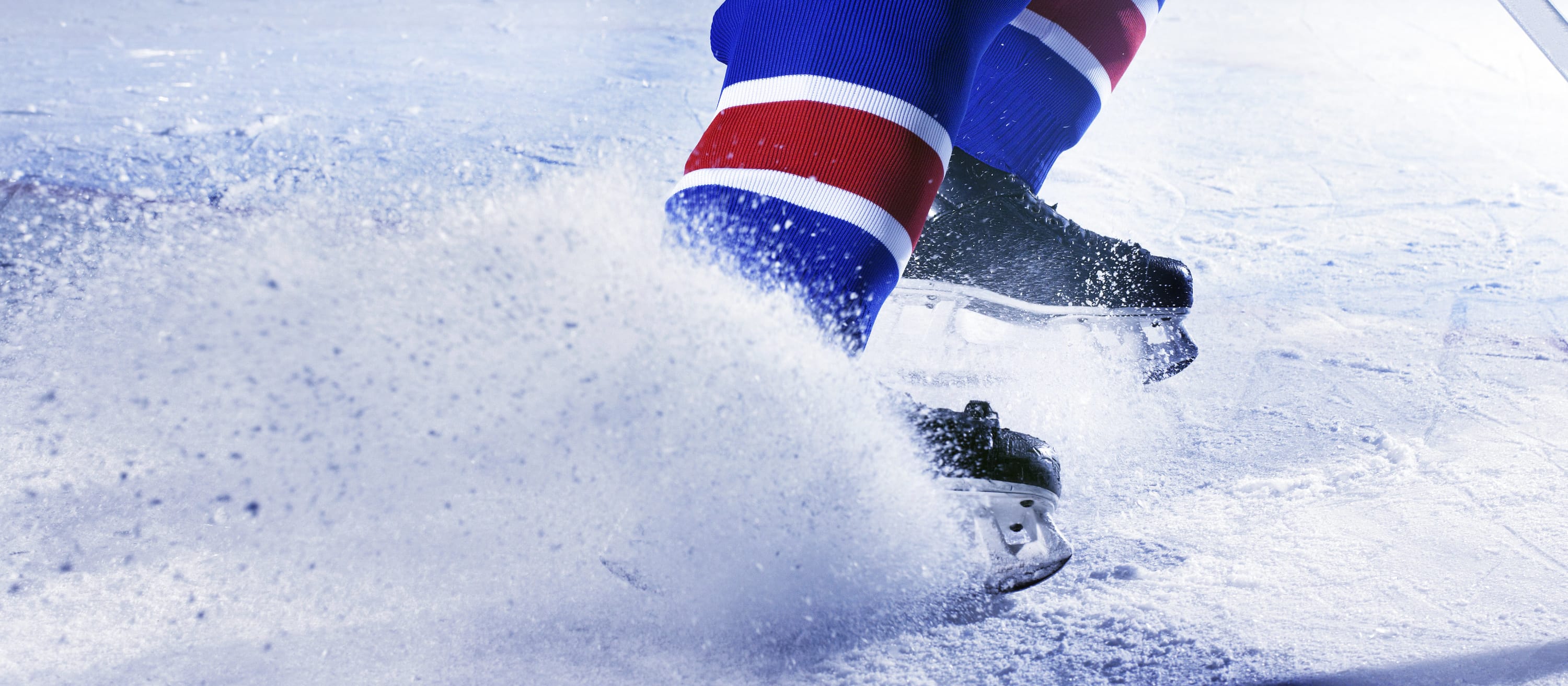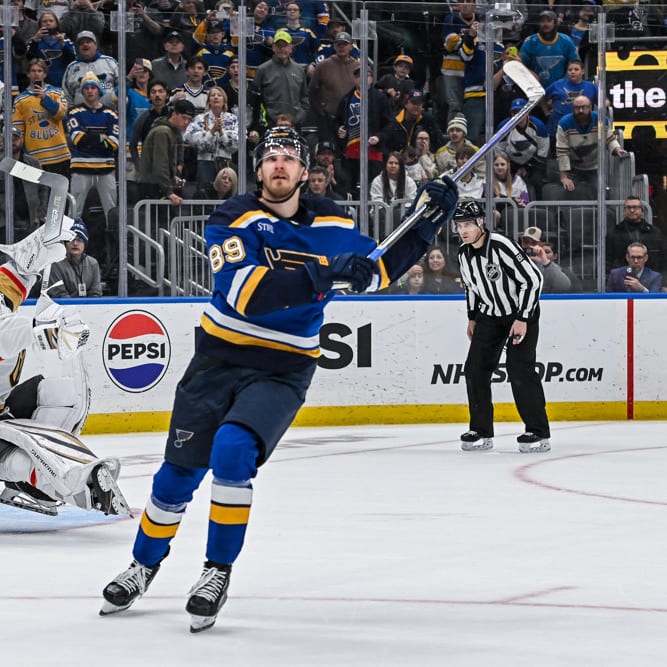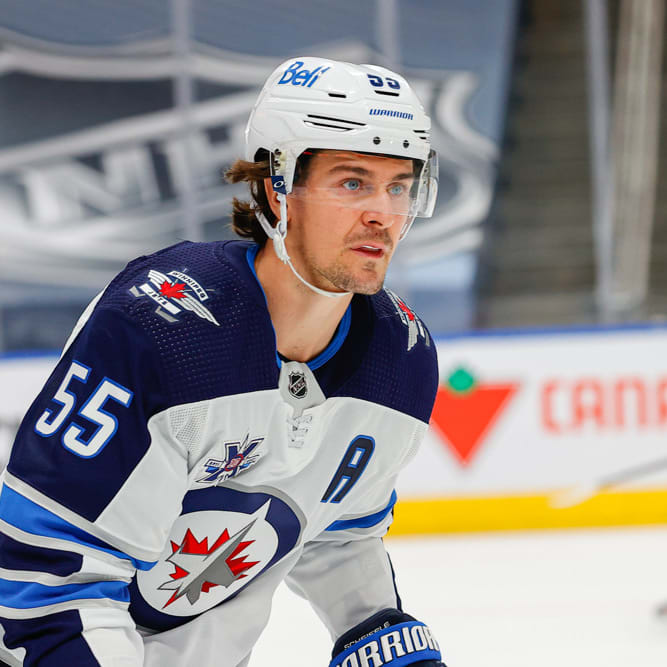This article is part of our Injury Analysis series.
It is amazing to see the increasing number of injuries as the season progresses. Even this early in the season, there are already some players that may be missing large chunks of the season.
Jason Blake of Anaheim will be out for a projected three months. He will be having surgery on Monday to repair some tendons in his wrist that were cut by a skate blade. The concern with any hand related injury is how quickly his normal hand function will return. Will his hand and grip strength come back in a reasonable about of time or will it be slowed due to the impact immobilization may have on the ligaments and tendons of the hand? After the repair, he will have a period of immobilization so no abnormal tension will be placed on the repair site. Once the surgeon has cleared the area for movement, the primary focus will be regaining normal range of motion. As with any injury, normal range of motion is a prerequisite for full recovery. For hand/wrist injuries, lacking motion will impact the player's ability to generate a forceful grip which is crucial for any hockey player for stick control and shooting. We will have to see how long before he is cleared to start using his hand.
Ryan Whitney of Edmonton is considered day to day with an ankle sprain. This is not a serious injury, but can be one of those injuries that can be a lingering issue as well as one
It is amazing to see the increasing number of injuries as the season progresses. Even this early in the season, there are already some players that may be missing large chunks of the season.
Jason Blake of Anaheim will be out for a projected three months. He will be having surgery on Monday to repair some tendons in his wrist that were cut by a skate blade. The concern with any hand related injury is how quickly his normal hand function will return. Will his hand and grip strength come back in a reasonable about of time or will it be slowed due to the impact immobilization may have on the ligaments and tendons of the hand? After the repair, he will have a period of immobilization so no abnormal tension will be placed on the repair site. Once the surgeon has cleared the area for movement, the primary focus will be regaining normal range of motion. As with any injury, normal range of motion is a prerequisite for full recovery. For hand/wrist injuries, lacking motion will impact the player's ability to generate a forceful grip which is crucial for any hockey player for stick control and shooting. We will have to see how long before he is cleared to start using his hand.
Ryan Whitney of Edmonton is considered day to day with an ankle sprain. This is not a serious injury, but can be one of those injuries that can be a lingering issue as well as one that can lead to other issues. Edmonton is also hoping for a healthy season so they can improve on their disappointing season last year. Ankle injuries can be nagging because hockey is played on a thin blade of steel, so the importance of ankle stability is clearly apparent. Trainers will tape up the ankle to assist with healing and management. But it is also important to address the neurological impact of injuries. The pain level may not be as high as other injuries but pain does several things. It changes how motor signals from the brain are processed. Pain also changes how we move and what muscles may be used in completing the task. Eliminating the pain is a relatively easy task. The difficult task is re-training the neurological-musculoskeletal system to work normally. If the system is allowed to work abnormally for a prolonged system of time, other muscles or regions may be stressed too much which may lead to other injuries or compensations such as back pain. So for Whitney, a quick resolution to the problem will be beneficial in many different aspects.
Pittsburgh was hoping for a good start but, with several of their stars still not healthy, they may have to wait a while before they are full strength. Brooks Orpik is still out after having sports hernia repair July 2011. The added difficulty for Orpik is that this is his second surgery for a sports hernia. This indicates two possibilities. One, he has weak abdominals; and/or, two, he has other areas that need to be address because it is placing added stress on his abdominal region. His rehabilitation process will need to address the secondary regions that have some limitation. It may be a hip that is on the stiffer side and does not have the normal extensibility and ease of mobility or it could be the lateral hip stabilizers that may not be stable enough to supplement the function of the abdominals. Bottom line is that the team wants Orpik to be fully recovered this time before his comes back because you really don't want him to get re-injured and have to have another sports hernia surgery.
Evgeni Malkin also needs to be careful. He had his ACL and MCL repaired in his knee in Feb 2011. It appears that he was experiencing some soreness in the knee. This may be due to his attempt come back as soon as he can. The ligaments play a significant role in adding stability to the knee. When the ligaments are repaired the normal motor planning is interrupted and this must be retrained. It is not good enough just be pain free. The proper motor planning must occur. Knee stability also must include the hip and ankle stability. If the hip and ankle's ability to control rotational movements is not working well, then it will add extra stress on the ligaments of the knee. Sometimes, the rehab process will try to overcome this by over using the hamstring and calf muscles. But over strengthening these muscles may weaken the overall stability of the leg and may lead to further knee issues or possibly a hip problem. So it would be to Malkin's and the Penguins' benefit to make sure he takes his time and comes back at full strength because this is going to be a long season.
Andrei Markov of Montreal is another player that is in a very similar situation. He had an ACL repair Dec 2010. He is still not skating and is still having problems, experiencing swelling in the knee. It is expected that this may be due to training too hard. This may be an example when he may need to work on other things besides just strengthening. Other areas that may need to be worked on are core strengthening and motor control, hip control, and stability and efficiency of motion. Many times, I have seen patients spend hours in the gym but report still experience knee pain. This is usually due to an over-emphasis on strength and not enough on control and efficiency. I have seen patients report a decrease in knee pain and increase in ease of motion after working on rotational trunk control. Markov's rehabilitation may need to take a step back and allow the leg to work more efficiently and decrease the stress on the knee. This will help the leg to make the adaptive changes so it can handle the workouts and easy into skating.
Another injury that is a frequent problem to hockey payers is groin injuries. Wojtek Wolski of the Rangers has been dealing with a groin problem since Oct. 1. Groin injuries are very problematic because of the direct impact it has on the skating motion. It decreases the player's speed, agility and power on their skates. We have seen repeatedly in past seasons players that start the season with a groin strain and continue to have a nagging groin issue during the season. It is these "minor injuries" that are not serious enough for the player to take any time off that seem to linger. They go to trainer or the physical therapist and try to manage while still practicing and playing. Not always but sometimes this only leads to the problem worsening. Other times, the problem will resolve without any residual issues. For Wolski, it may be time to take a few days off and to assess what is driving the groin problem. An overworked muscle or region may indicate compensation for other deficiencies. A thorough assessment will assist development of a complete training program that will lead to recovery and future injury prevention.









